Barbados Flag Meaning
Three vertical stripes of ultramarine blue, gold, and ultramarine blue with a black trident head (broken from its staff) in the center golden stripe, representing the sea surrounding the island, the golden sands of its beaches, and the break from colonial dependence on Neptune's trident symbol.
- Continent
- North America
- Adopted
- 1966
- Ratio
- 2:3
- Colors
- blue, yellow, black
- Designer
- Grantley W. Prescod
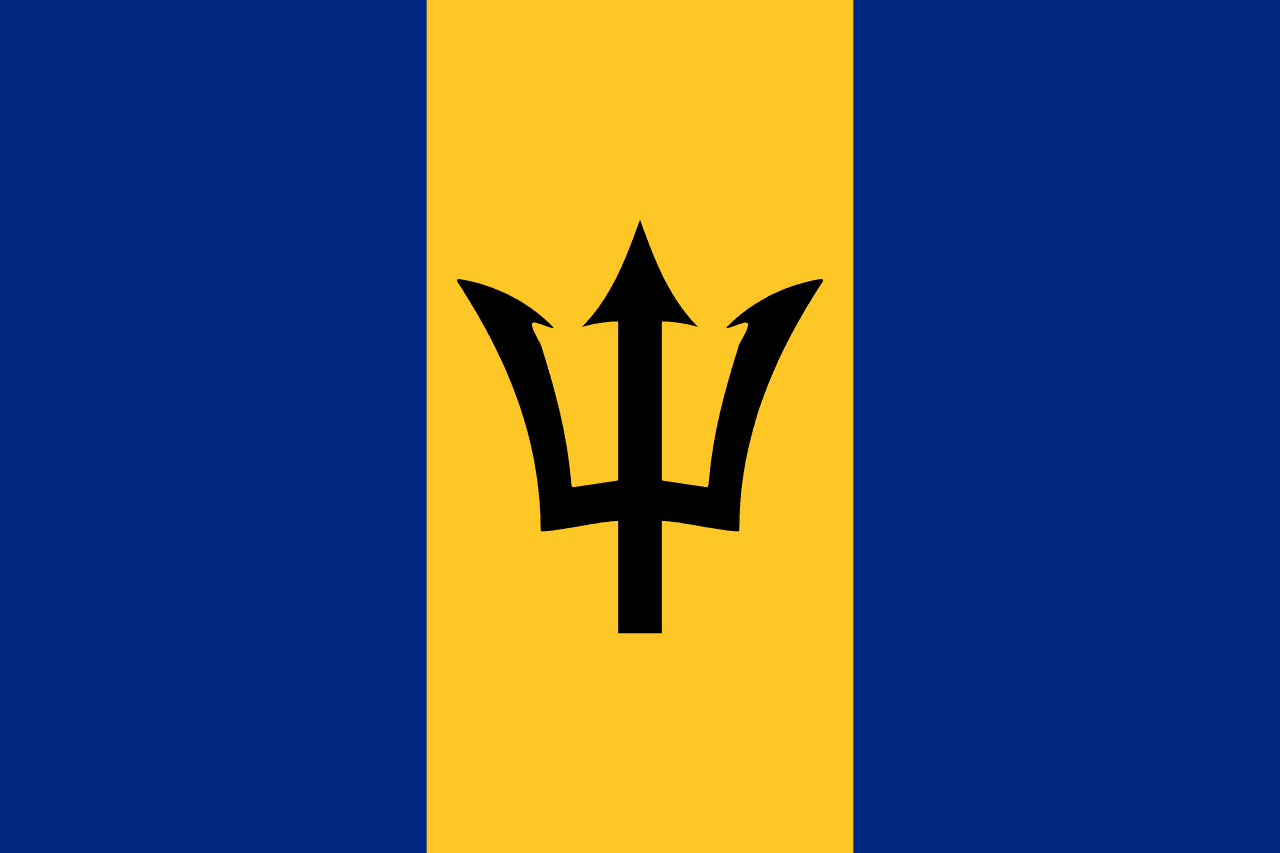
Symbolism
Blue Stripes: Represent the sea and sky surrounding Barbados, symbolizing the island's maritime heritage, the Atlantic Ocean that shapes its geography and economy, and the endless blue skies of the Caribbean.
Golden Stripe: Represents the golden beaches and sand of Barbados that attract tourists from around the world, as well as the bright future and prosperity of the newly independent nation.
Broken Trident: Represents the broken trident of Neptune from the colonial coat of arms, symbolizing Barbados's break from its colonial past and dependence on Britain, while maintaining its connection to the sea.
Three Prongs of Trident: Represent the three principles of democracy that guide the nation: government of the people, government by the people, and government for the people, establishing the foundation of Barbadian democracy.
History
- Pre-1500: Arawakan-speaking peoples, including the Taíno and Kalinago (Caribs), inhabited the island for centuries before European contact, developing sustainable fishing and agricultural communities.
- 1627: English colonists established the first permanent European settlement, initially growing tobacco and cotton before transitioning to the more profitable sugar plantation economy.
- 1640s-1800s: The sugar economy transformed Barbados into one of Britain's most valuable colonies, built on the labor of enslaved Africans who comprised over 90% of the population by the 18th century.
- 1816: Bussa's Rebellion, the largest slave uprising in Barbadian history, was brutally suppressed but became a symbol of resistance and is now celebrated as a foundational moment in Barbadian national consciousness.
- August 1, 1834: Slavery was abolished throughout the British Empire, though former slaves in Barbados faced continued exploitation through the apprenticeship system and limited economic opportunities.
- 1930s: Economic hardship and labor unrest led to the formation of political parties and trade unions, with leaders like Grantley Adams beginning the movement toward self-government and workers' rights.
- 1958-1962: Barbados joined the West Indies Federation, an attempt to create a unified Caribbean nation, with Grantley Adams serving as the federation's only Prime Minister before its collapse.
- November 30, 1966: Barbados gained independence from Britain under Prime Minister Errol Barrow, adopting the current flag design and becoming a sovereign nation within the Commonwealth.
- 1970s-1980s: Economic diversification led to the development of tourism and offshore financial services, reducing dependence on sugar production while maintaining strong ties with Britain.
- 1990s-2000s: Barbados became a major tourist destination and regional financial center, while developing a strong educational system and healthcare infrastructure that became models for the Caribbean.
- November 30, 2021: Barbados became a republic, removing Queen Elizabeth II as head of state and installing Sandra Mason as the first President, while maintaining Commonwealth membership.
Trivia
- Barbados is the birthplace of rum, with Mount Gay Rum being the world's oldest rum brand, established in 1703 and still produced on the island today.
- The flag represents the most easterly Caribbean island, positioned outside the hurricane belt, which has contributed to its stability and attractiveness to tourists and investors.
- Barbados has one of the highest literacy rates in the world at over 99%, reflecting the strong emphasis on education inherited from British colonial institutions and expanded after independence.
- The island is famous for producing world-class cricketers, including Sir Garfield Sobers, widely considered one of the greatest all-round cricketers in history.
- Bajan dialect, a unique English-based creole, serves as the everyday language of most Barbadians while Standard English remains the official language of government and education.
- The flag flies over an island that measures only 166 square miles, making it one of the most densely populated countries in the Americas with about 280,000 residents.
- Barbados was the first Caribbean country to achieve universal healthcare and maintains one of the region's most advanced medical systems.
- The island's Crop Over festival, originally celebrating the end of the sugar harvest, has evolved into the Caribbean's most famous carnival celebration after Trinidad's.
- Barbados is known as 'Little England' due to its strong British cultural influences, parliamentary system, and Anglican church traditions that distinguish it from other Caribbean islands.
- The flag represents a country that has successfully transitioned from a sugar monoculture to a diversified economy based on tourism, international business, and light manufacturing.
- Flying fish and cou-cou (cornmeal and okra) is the national dish, reflecting the island's maritime culture and African culinary influences brought by enslaved peoples.
- Barbados has produced numerous international celebrities including pop star Rihanna, who was declared a National Hero in 2021 during the republican transition ceremony.
- The island's coral limestone composition has created extensive cave systems and underground lakes, making it a unique geological formation in the Caribbean.
- Barbados maintains the Westminster parliamentary system and common law legal framework inherited from Britain, contributing to its reputation for political stability.
- The flag represents a country that has become a major offshore financial center while maintaining strict regulatory standards that have helped it avoid major international sanctions.
Related Countries
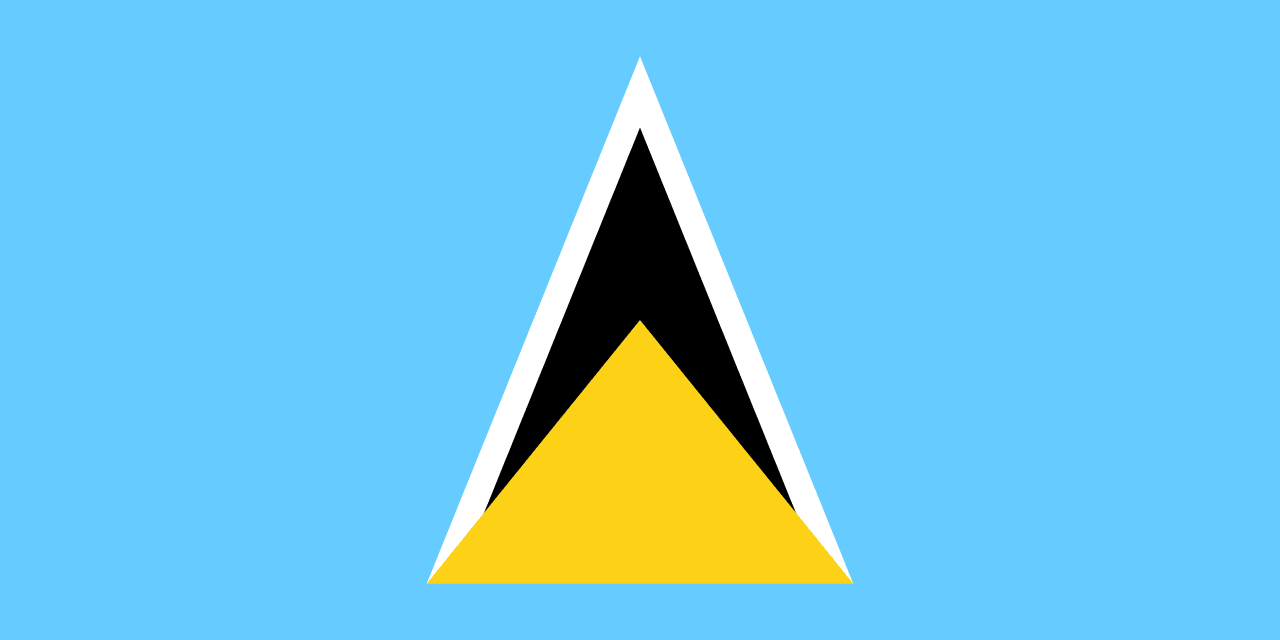
Saint Lucia
North America
A cerulean blue field with a gold isosceles triangle in front of a white-edged black triangle. The design reflects the island’s natural features and cultural heritage.
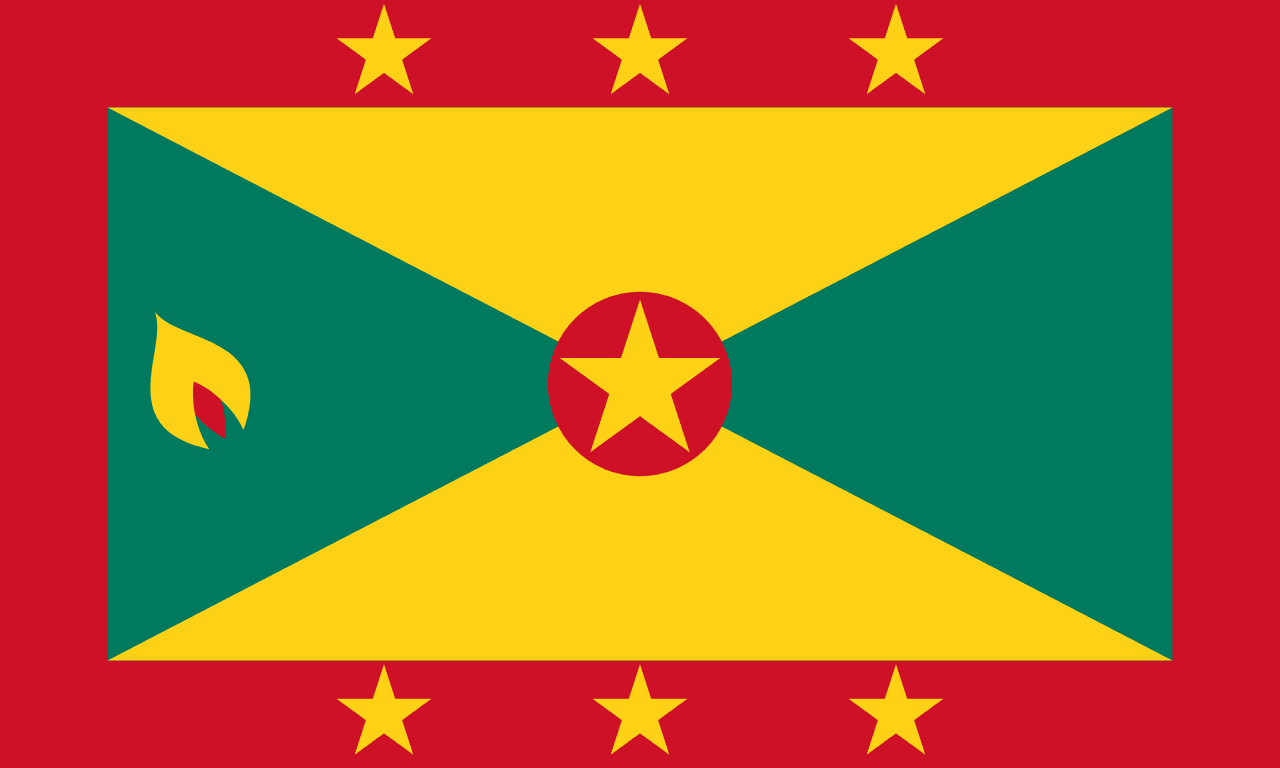
Grenada
North America
A red border surrounding yellow and green triangular sections with seven gold stars and a nutmeg symbol, representing the warmth of the people, sunshine and agriculture, vegetation and youth, and Grenada's fame as the 'Spice Island.'
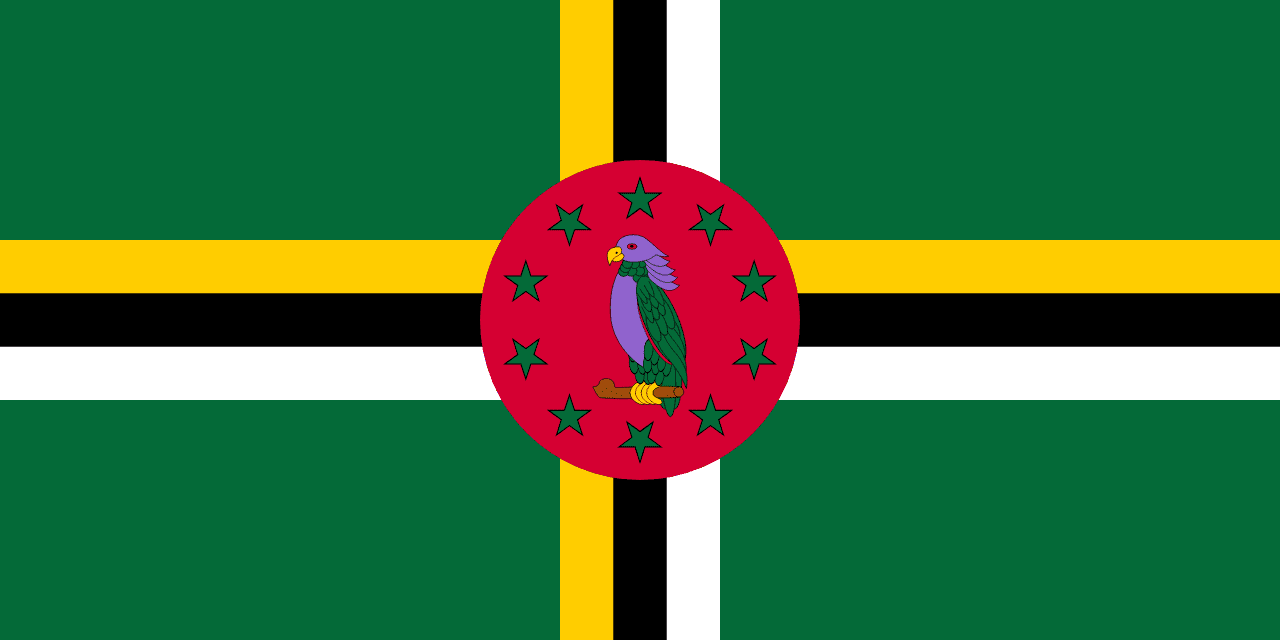
Dominica
North America
A green field with a cross pattern of yellow, black, and white stripes and a red circle in the center containing the Sisserou parrot, representing the lush vegetation, the Trinity, racial harmony, and the unique wildlife of the 'Nature Island of the Caribbean.'

Guyana
South America
A green field with a yellow arrowhead bordered in white pointing toward the fly, and a red triangle bordered in black at the hoist, known as 'The Golden Arrowhead,' representing the country's natural resources, diversity, and forward progress.
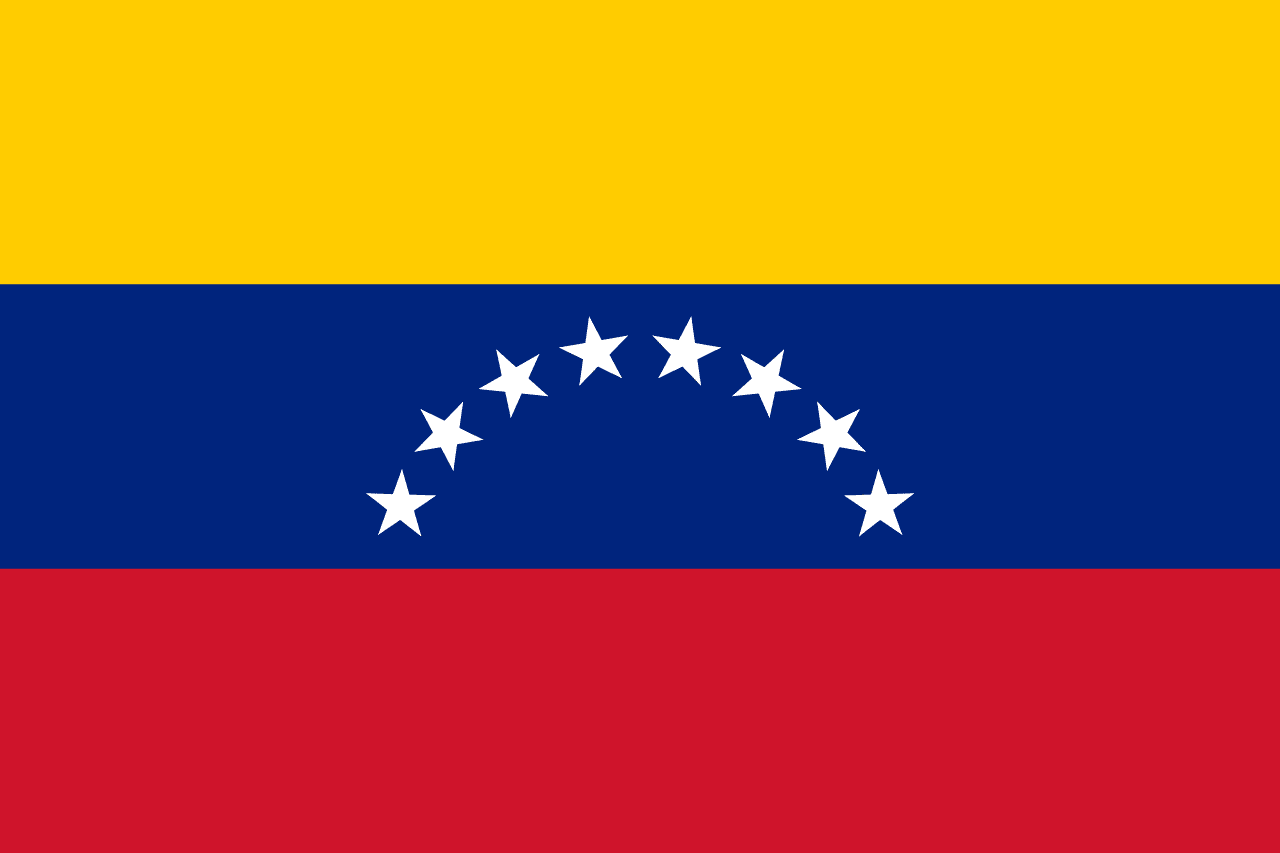
Venezuela
South America
Three horizontal stripes of yellow, blue, and red with eight white stars in an arc on the blue stripe and the coat of arms on the upper hoist corner, representing the wealth of the land, the seas separating Venezuela from Spain, the blood shed for independence, and the eight original provinces that declared independence.
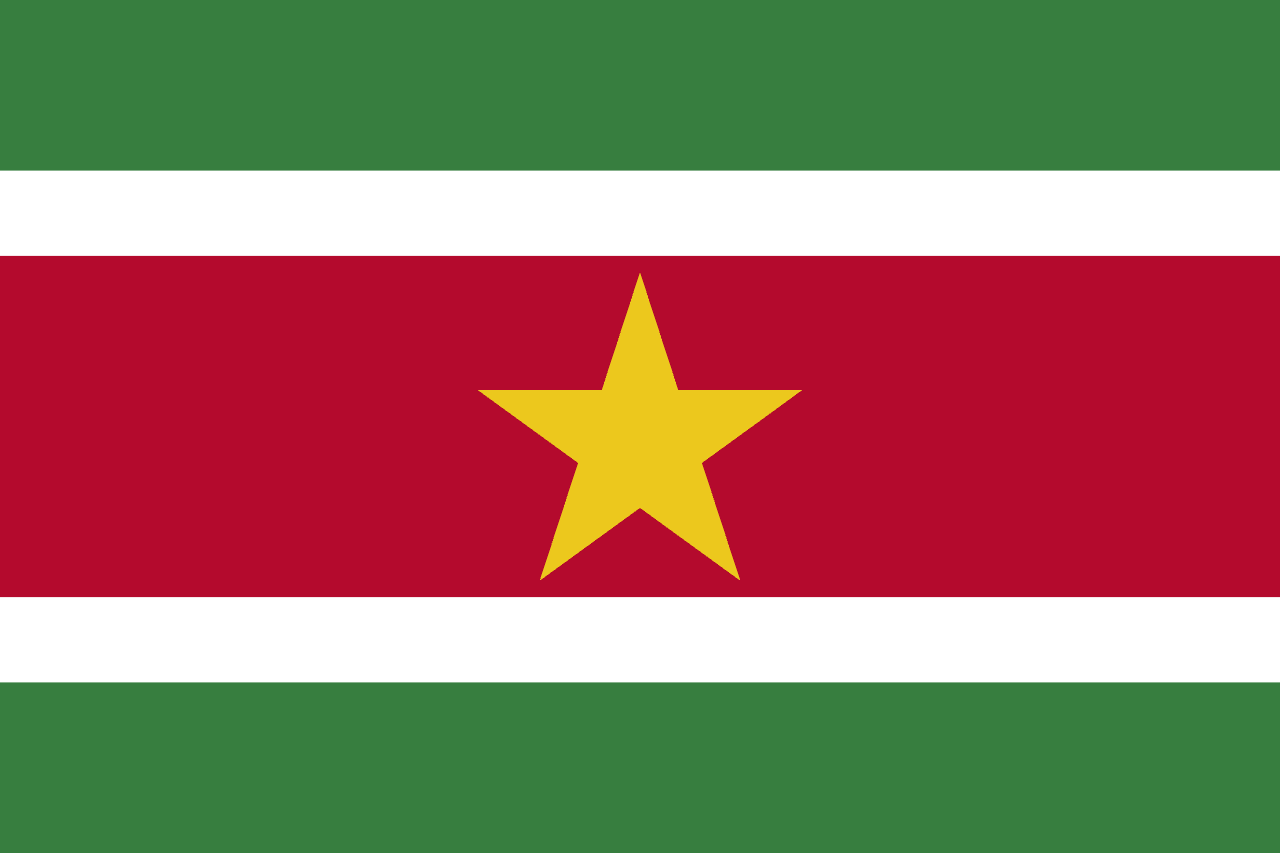
Suriname
South America
Five horizontal stripes of green, white, red, white, and green with a yellow five-pointed star in the center of the red stripe, representing the country's forests and agriculture, peace and justice, unity and progress of the people, hope and golden future, designed for independence in 1975.